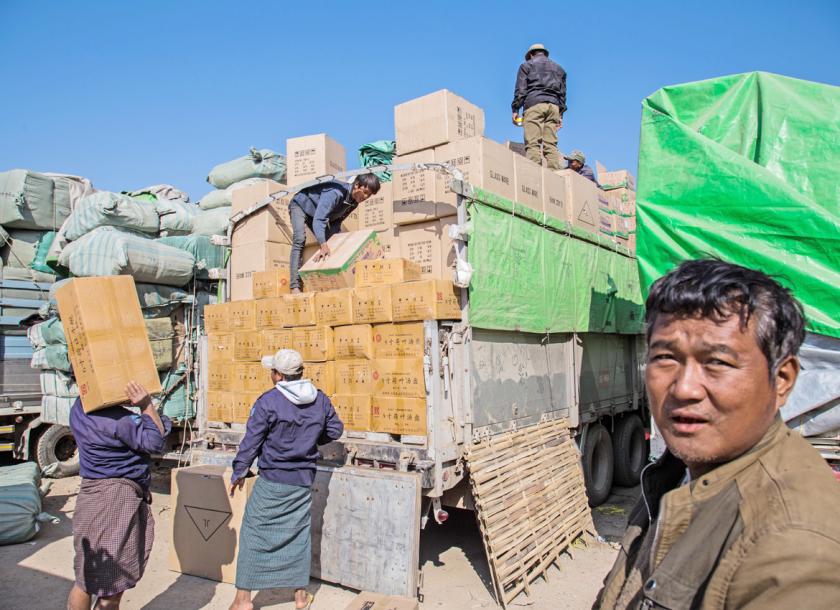Myanmar: External trade rises year-to-date, but border trade stalls
The rise in external trade came despite a substantial drop in business at many of Myanmar’s border trade gates. During the period, border trade fell by $151 million to $3.8 billion.
In comparison, trade via the country’s sea routes rose by $2 billion to $13 billion, representing around 80 percent of total external trade. Most of Myanmar’s sea-bound trade passes through six ports in Yangon, mainly terminals run by the Myanmar Port Authority, Thilawa , Myanmar Industry Port and Asia World Port Terminal.
Border trade down
Myanmar trades with its neighbours across the border via 16 border gates. Trade with China is conducted via Muse, Lweje, Kanpikete, Chin Shwe Haw and Kengtung. The country also trades substantially with Thailand via Tachilek, Myawady, Kawthoung, Myeik, Htee Khee, Maese and Mawtaung.
Further up north, Myanmar trades with Bangladesh through Sittwe and Maungtaw. With India, trade is conducted via Tamu and Reed.
The main reason for the drop in border trade was lower activity in Muse, where the bulk of Myanmar’s border business with China takes place. Between April 1 and October 13, trade at Muse, which shares the border with China’s Yunnan Province, was down by $121 million, accounting for around 80pc of the total drop in border trade, according to the Ministry of Commerce (MOC).
This was due to suspensions in exports of locally produced rice, sugar, corn, tea as well as various marine, mineral and forestry products. Myanmar also buys finished consumer and capital goods from the Chinese at the border. Trade stalled after an armed conflict hit Myanmar’s Kokang region in northeastern Shan state early this year, resulting in temporary suspension of border trade through Muse.
Meanwhile, border trade at the Tamu and Reed gates between Myanmar and India was down, too, falling some $19 million to $34.5 million during the period.
The decline in trade with China and India overshadowed trade with Thailand, which rose during the same period. Myanmar conducts most of its trade with Thailand via the Myawady border gate, trade at which was flat at $466 million during the period. Meanwhile, border trade at the Kawthoung border gate rose. Total border trade between the two countries currently stands at $694 million.
Despite the unfolding refugee crisis in Rakhine, border trade at the Sittwe and Maungtaw gates also rose, as Bangladeshi demand for Myanmar pulses and beans, ginger, garlic, rice, bamboo, blankets and footwear grew.
Trade deficit
Overall, the national trade deficit for the period rose to $2.3 billion, as imports, which totaled $9.6 billion, overtook exports. In comparison, the trade deficit amounted to $1.9 billion during the same timeframe last year.
Myanmar exports mainly agriculture, marine and forestry products as well as livestock, minerals and finished industrial goods. Its imports consist of equipment and machinery, raw materials such as steel, plastic, fertilizers and petroleum as well as cars and other vehicles.
The trade deficit is also impacted by the strength of the local currency, the kyat, which weakened by around 7pc in the past year to 1,361 against the US dollar on October 26.
Source: https://www.mmtimes.com/news/external-trade-rises-year-date-border-trade-stalls.html


 Thailand
Thailand




